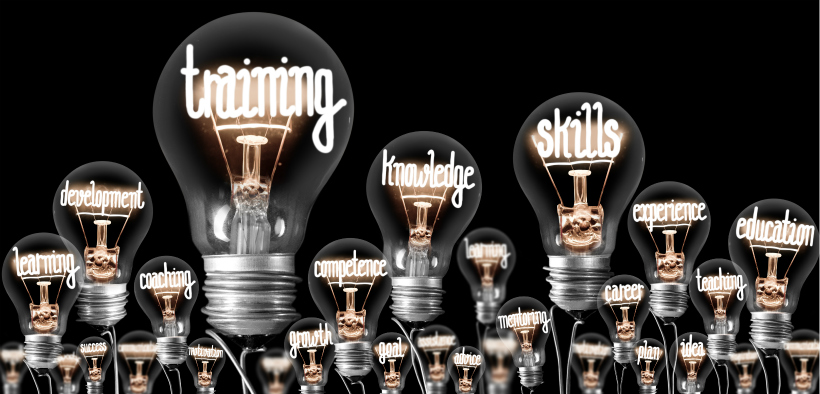This article first appeared in Academic Leader on September 21, 2020© Magna Publications. All rights reserved.
With the recent social disruption caused by the COVID-19 pandemic, it is difficult to predict the future of higher education. But it would seem our industry will be facing challenges and must be flexible enough to meet the post-pandemic new world order. Employability of certain college grads has always been an issue, and this may become even a bigger problem in the near future if the economy continues to falter.
Higher education concerns include enrollments, affordability, and declining public funding sources (among others). A group of public college leaders, interviewed in late 2019 and early 2020, responded to findings resulting from a fall 2019 survey designed to capture higher education’s biggest challenges (Association of Public and Land-grant Universities, 2020). They reported consistent prioritization of major challenges facing their institutions: government funding, student mental health and well-being, diversity and inclusion efforts, and affordability.
COVID-19’s arrival and lasting impacts may also exasperate higher education’s sustainability, especially student participation within academic, personal, social, and extracurricular activities that have traditionally helped define the college undergraduate experience and future job prospects.
Higher education has, unfortunately, struggled to adapt to changing economic situations. Forty-plus years of challenging government economic policy in the US is partially responsible for the phenomenon of underemployed, debt-indentured college grads. Many recent college graduates, frequently those who studied the liberal arts, have significant student loan debt and do not easily fit into the new economy workforce. One 21st-century employment area that has received significant attention is STEM. Many college grads are not immediately or adequately prepared for entry into the emerging and demanding American STEM-based workforce.
According to Lazio and Ford (2019),
Nearly 60 percent of employers struggle to fill [STEM] job vacancies within 12 weeks, and careers in science, technology, engineering and math (STEM) are at the heart of the skills gap in America. The U.S. currently has millions of unfilled STEM jobs . . . nearly 3.5 million STEM jobs that need to be staffed by 2025.
All is not doom and gloom for the liberal arts. Certainly, liberal arts graduates have excellent analytical and adaptive skills. Over the years, many US economic and political polices have lent support to the funding of public colleges and universities based more upon work preparation resulting in postgraduation employment.
A survey conducted on behalf of the Association of Colleges and Universities offers insight on the value of a liberal arts education to employers (Pasquerella, 2019). Overall, business executives and hiring managers in private and nonprofit organizations found favor with colleges and universities. Employers also validated the importance of comprehensive learning and broad-ranging skills as essential for career preservation over time, indicating encouraging support for a solid foundation in the liberal arts.
Even so, the value of a liberal arts education has been debated frequently over the years (see, for example, College of St. Scholastica, 2017). The liberal arts background still has value. But times are changing. Flux in higher ed, the economy, government policy, and workforce needs is evident. How can we help liberal arts majors improve their employability prospects?
Students should follow their dreams, of course. But they should not suffer long-term financial problems because of those aspirations.
Too many people get degrees that don’t get them jobs. I have a simple proposal to remedy this problem.
A solution
Community colleges are often the recognized source for training students in “job-ready” careers or occupations. My institution, like many other US community colleges, offers valuable applied science degrees to students. Briefly, for those of you who need a little “training,” the AAS is a vocation-specific degree. A student seeking an AAS in welding at my school will take 42 credit hours of dedicated welding and technology courses. The degree also has a 10 to 23 credit hour academic requirement of traditional courses in social sciences, math, English, and communications. (The remaining credit hours are typically in computer competency, professional, and business-related courses.)
Yes, job training degrees at community colleges require an academic component.
Consider an alternative approach. What if all academic degrees required a job-training component? The structures for this already exist. Why not require all AA candidates to take a few credit hours in coursework more directly related to job training? Students could essentially complete enough classes to earn a certificate or minor credential in massage therapy, culinary arts, or some other job-ready field. More traditional, baccalaureate-level English and social science majors could obtain a secondary teaching certification at their universities. Students studying economics could be guided into courses in accounting and bookkeeping. Premed students might be well-advised to take a course in medical transcription or insurance coding at a community college—areas that would provide immediate employment and enhance their later careers as physicians. Engineering majors, according to their area of focus, could benefit immediately (and as professionals later) from courses in CNC machining, surveying, utilities maintenance, and mechanics, to name a few. All the vocational areas mentioned above could help students find immediate employment during their transitional years—and potentially enhance their professional careers later.
Denouement
What if we began even partially reforming the culture of higher education? What if the secondary schools and the Department of Education stopped beating the drums for college readiness at the expense of specialized vocational skills? How about supporting rather than diminishing the value and benefits of the trades, the craftspeople, and the knowledge too often perceived as nonacademic?
Perhaps we can best alleviate economic injustice by helping our students more fully participate in a society that increasingly requires specific work-related skills, entrepreneurship, flexibility, and multitasking. From Hayes (2020):
The concept of economic justice intersects with the idea of overall economic prosperity. There is a belief that creating more opportunities for all members of society to earn viable wages will contribute to sustained economic growth. When more citizens are able to provide for themselves and maintain stable discretionary income, they are more likely to spend their earnings on goods, which in turn drives demand in the economy.
Mandating degree-seeking students to take a few job-skills courses as part of their academic programs will create a better “place” for all Americans and those international students who decide to stay and work in this country—or return home for employment.
Yes, our colleges and universities have made a valiant effort to function during the national lockdown and lingering economic uncertainty. There is no doubt that video-conference classes and online instruction are here to stay. One can expect all kinds of curricular changes in the next year or two—especially for traditional hands-on vocational programs.
I firmly believe every higher ed students should participate in at least a “minimal” vocational training program to improve their economic and life quality prospects after graduation. The world as we knew it is not coming back. Our students need to be prepared for a new reality—one that may require more than “traditional” academic skills. Remote work and learning will require an ever-increasing reliance on technology and technological adaptation.
Perhaps American education has reflected a continuing historical struggle between Ben Franklin’s pragmatism and R. W. Emerson’s idealism. But vocational education and traditional education have coexisted, with varying status levels, for many decades. My recommendation is that we as educators bring them together and still encourage our students to passionately follow their dreams. Times are tough and may get tougher. Let’s give every college student a road map and a tool kit for success.
Jeffrey Ross, EdD, is an adjunct English professor at Central Arizona College. He has published articles related to higher education issues and policy in Inside Higher Ed, Times Higher Education, and Academic Leader.
References
Association of Public and Land-grant Universities. (2020). How COVID-19 changed everything and nothing at all. https://www.aplu.org/library/how-covid-19-changed-everything-and-nothing-at-all/file
The College of St. Scholastica. (2017, April 24). You’re majoring in what? Making the case for a liberal arts degree. http://www.css.edu/the-sentinel-blog/making-the-case-for-a-liberal-arts-degree.html
Hayes, A. (2020, March 23). Economic justice. Investopedia. https://www.investopedia.com/terms/e/economic-justice.asp
Lazio, R., & Ford, H., Jr. (2019, June 6).The U.S. needs to prepare workers for STEM jobs. HR Today https://www.shrm.org/hr-today/news/hr-magazine/summer2019/pages/the-u.s.-needs-to-prepare-workers-for-stem-jobs.aspx
Pasquerella, L. (2019, September 19). Yes, employers do value liberal arts degrees. Harvard Business Review. https://hbr.org/2019/09/yes-employers-do-value-liberal-arts-degrees




